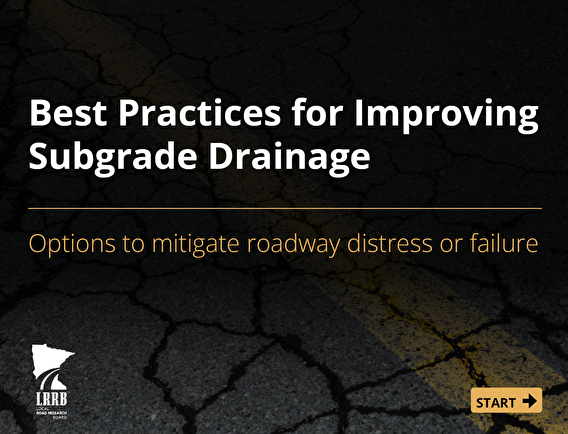
A new interactive tool from the LRRB helps agencies understand drainage problems and options for mitigating structural damage to pavements due to moisture. It includes information on design, construction, maintenance, typical sections and specifications, resources, and more.
Weather and soil conditions vary drastically across Minnesota, so it’s important to understand soil subgrade conditions when considering subsurface drainage for a roadway project. If subgrade soils consist of free-draining granular soils, subsurface drainage may not be warranted.
However, where subgrade soils consist of finer-grained soils that are susceptible to frost action—and sensitive to moisture and susceptible to subgrade weakening when exposed to excess water—some sort of subsurface drainage should be considered. The guidebook recommends that engineers use their judgment and seek expert guidance when necessary.
For example, silty and clayey soils are highly frost susceptible; the guidebook recommends including a permeable base and edge drains. In well-draining soils, engineers may consider the use of tile in low points—the sag of vertical curves where drainage may accumulate.
The benefits of subgrade drainage can be significant. Roads with good drainage recover faster in spring freeze-thaw conditions, making the pavements less vulnerable to premature distress caused by heavier loads.
Learn more:
- Best Practices for Improving Subgrade Drainage (LRRB, June 2023)